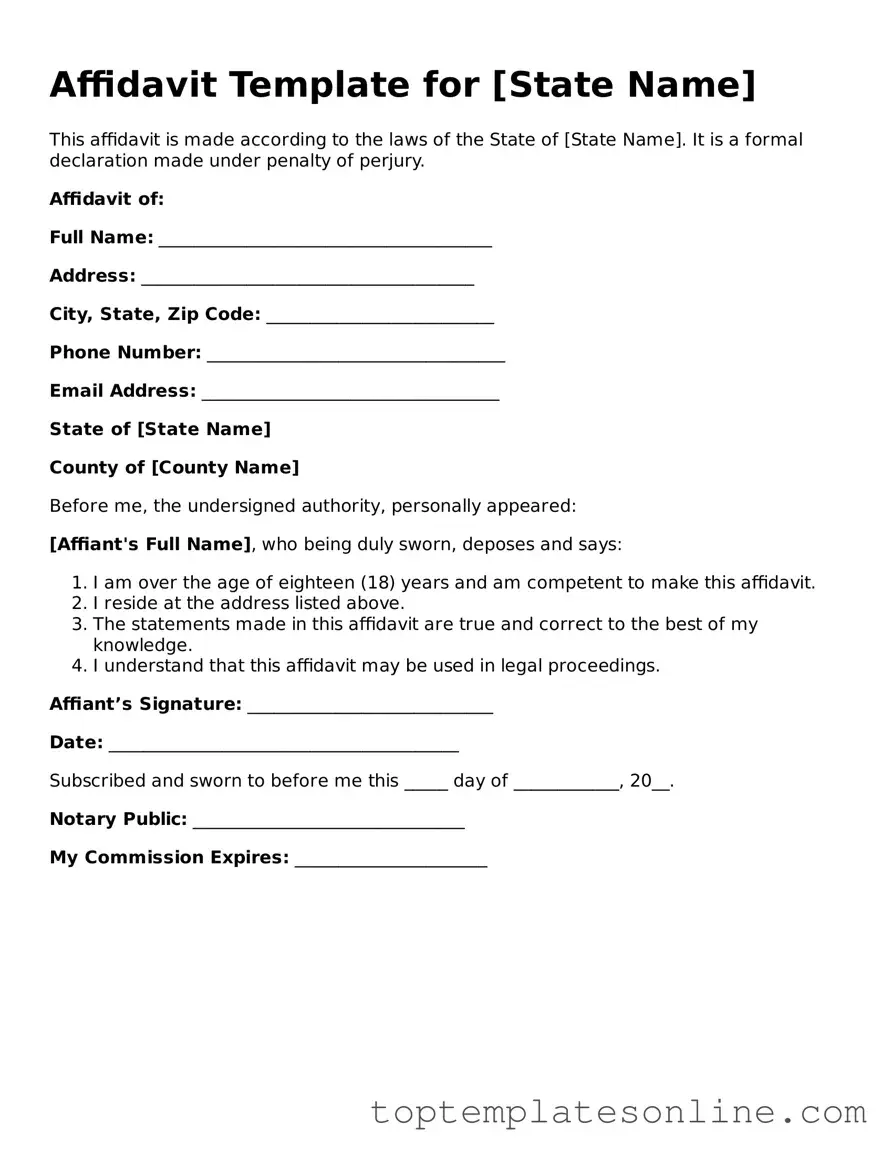Affidavits play a crucial role in various legal processes, serving as written statements made under oath. They are often used to provide evidence in court cases, supporting claims or defenses presented by parties involved. Typically, an affidavit includes the affiant's personal information, a clear declaration of facts, and a signature, all attesting to the truthfulness of the statements made. This document can be pivotal in matters such as family law, business disputes, and property issues, among others. When preparing an affidavit, it is essential to ensure that the information is accurate and relevant, as any falsehood can lead to serious legal consequences. Additionally, the format and requirements for affidavits can vary by jurisdiction, making it important for individuals to understand the specific guidelines applicable to their situation. Overall, affidavits serve as a vital tool in the legal landscape, helping to establish credibility and support arguments presented in various proceedings.
